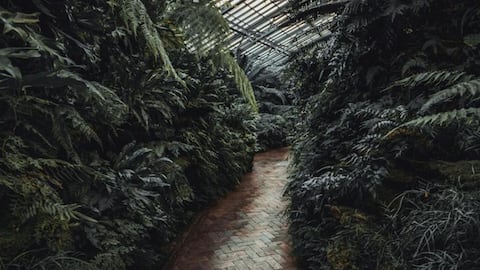Exploring biophilic designs and their benefits
What's the story
In a world dominated by concrete jungles and digital landscapes, the human connection to nature often takes a back seat. However, the concept of biophilic design in the building industry seeks to bridge this gap by integrating natural elements into our built structures. This trend goes beyond just visual appeal. Let us explore the essence of biophilic designs and the myriad benefits they offer.
Explainer
What is biophilic design?
Biophilic design is a design philosophy that acknowledges the innate human tendency to seek connections with nature. Grounded in the theory of biophilia, this design philosophy acknowledges our deep-rooted connection to the natural world. With over 99% of our evolutionary history spent adapting to nature, biophilic building design seeks to adopt naturalistic tranquility into the fabric of our modern living spaces.
Patterns
Nature inspired art
Examples of biophilic art include incorporating biomorphic forms such as patterns, symmetries, shapes, and textures found in nature, like hives and webs. This involves the use of materials and grains that reflect an overarching sense of the natural world. Additional examples involve incorporating natural pathways for movement, integrating forms, and utilizing patterns inspired by vegetation.
More examples
Textured glass and walls
Textured glass panels, featuring patterns reminiscent of natural elements like water ripples or tree bark, offer a subtle yet effective way to integrate biophilic textures into windows, doors, and partitions. Textured wall coverings inspired by natural elements, such as bark or leaves, create focal points and contribute to the overall biophilic theme. These coverings add depth and interest to vertical surfaces.
Benefits
Benefits of biophilic design
Studies show that exposure to nature and natural elements can reduce stress, anxiety, and fatigue. Biophilic design has been linked to increased cognitive function and creativity. Employees in biophilic office spaces report higher job satisfaction and lower rates of absenteeism. Educational environments with biophilic elements have shown to enhance learning outcomes. Healthcare spaces incorporating nature have been associated with faster patient recovery times.
Buildings
Biophilic inspired airports
Singapore Changi Airport's Terminal 3 boasts the Butterfly Garden, offering a lush green oasis where travelers can marvel at diverse butterfly species. Doha's Hamad International Airport embraces biophilic design with natural materials and a emphasis on natural light. Bengaluru Kempegowda International Airport's Terminal 2 mirrors a forest's aesthetic, featuring hanging plants, skylights, and bamboo-clad steel elements. Biophilic designs can potentially reduce greenhouse gas emissions.
